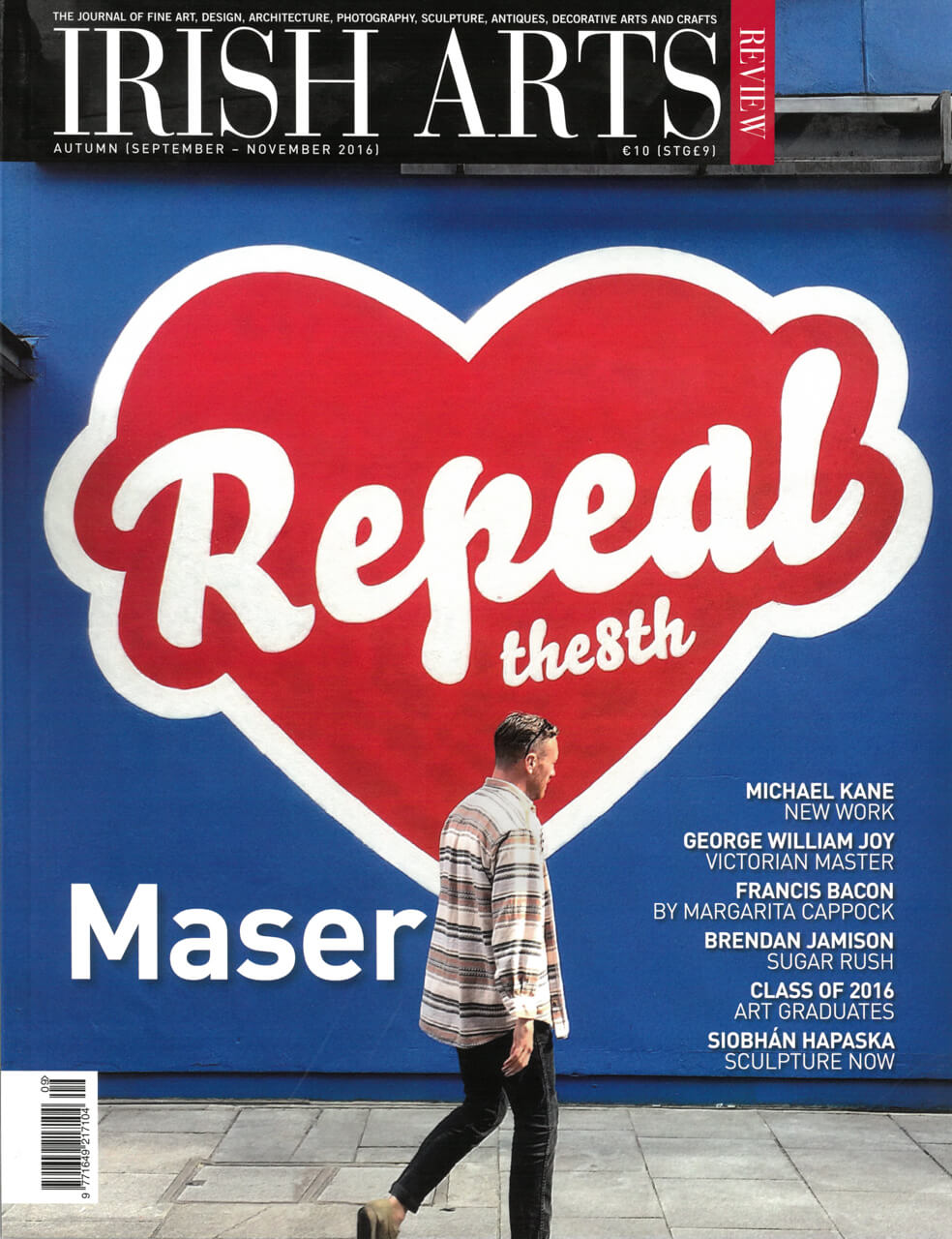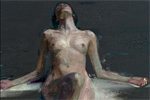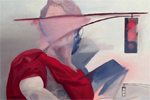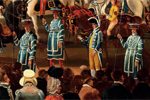
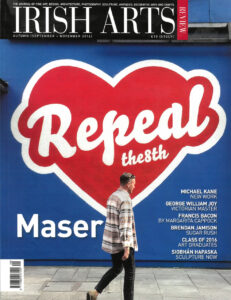
William Turner de Lond captured two significant political events during his sojourn in Ireland, examined here by Mary Jane Boland.
In the history of Irish art, the early 19th century has often been viewed as a time when artists moved to London in search of lucrative patronage that didn’t exist at home. It is surprising then that a British artist might travel in the opposite direction during this period, choosing to come to Ireland to find a new audience and a fresh market. From this perspective, the Scottish artist William Turner de Lond, who toured around Ireland from c.1820 to 1822, represents something of an anomaly. Why did he choose to visit the country? What was the attraction of the Irish people? Did he find the commercial opportunities he was looking for?
Unfortunately, little evidence about this enigmatic journey-man painter survives and extant works are often in poor condition. It is most likely that he travelled to Ireland from Britain sometime in 1820, possibly in anticipation of a potential visit by George IV, who would eventually come to Ireland in August 1821. The monarch’s visit was the subject of widespread anticipation and remains one of the most visually recorded public events in early 19th-century Ireland. Furthermore, the Royal Institution for the Promotion of Fine Arts in Ireland ran a competition for a painting that would ‘commemorate his Majesty’s most gracious visit to this country’ and offered a generous £500 as prize money.1
It is unsurprising then that several works marking the occasion exist by Turner de Lond, the most ambitious of which details George IV’s entry into the city of Dublin via Sackville (now O’Connell) Street on 17 August 1821 (Fig 2). This work was exhibited in Limerick only six weeks after the event in the Exhibition of Works by Old Masters, Artists and Amateurs, which was held in a temporarily-erected exhibition room at Swinburne’s Ballroom on Brunswick (now Sarsfield) Street.2
It was exhibited in October 1821, along with fourteen other works relating to Ireland by the artist, including images of Bunratty Castle, the canal at Killaloe, the market at Ennis, O’Sullivan’s Cascade at Killarney, the Four Courts and a picture of local celebration on the streets of Limerick in The Chairing of Thomas Spring Rice (1821) (Fig 1). In this image, the artist focuses on a recent episode in Limerick’s history when thousands of people gathered to show their support for the newly elected liberal MP, Thomas Spring Rice. Such a specifically local subject can only have been intended for a local patron, or maybe even for Spring Rice himself. However, neither this work nor George IV, King of England entering Dublin were sold at the exhibition and were re-advertised by Turner de Lond in 1822 prior to his departure to Edinburgh. At this point he ‘beg[ged] to offer to the Independents [The Chairing of Thomas Spring Rice], either individually or collectively, for purchase at one-half its intrinsic value’ and pleaded with the readership not to ‘suffer him to depart without an endeavour to give a partial remuneration for his time and expenses, by the purchase of the picture on the above terms.’3 Aware of the improbability of selling images of the Irish urban world in Scotland, Turner de Lond’s desperation to offload this painting before his departure is palpable. Fortuitously, it seems the people listened to his pleas: in September 1822 the Limerick Chamber of Commerce purchased the image of Spring Rice to ‘use in their rooms’4 in the Commercial Buildings and also purchased George IV, King of England entering Dublin around the same time for £45, 10s.5
Today, The Chairing of Thomas Spring Rice remains in its original resting place in the offices of The Limerick Chamber of Commerce. George IV, King of England entering Dublin is now in the collection of the National Gallery of Ireland and has recently been restored in anticipation of its inclusion in the gallery’s forthcoming ‘Creating History’ exhibition.
These images stand apart because they present a version of early 19th-century Ireland that is rarely seen. George IV, King of England entering Dublin presents a city thriving under the Union with Britain. The commanding monarchical cavalcade serves as a reminder of the triumph of imperialism, and of course, emphasizes the political hierarchies that were established by the merging of parliaments in 1800. The poverty, austerity and agrarian unrest of the 1820s is glossed over and instead the idealized tone in Turner de Lond’s work is one of harmony and order. Throughout his images of Ireland he presents an improving nation, urban rather than rural, filled with new market squares, canals, communications networks (in the form of roads and postal carriages), hard-working urbanites and much-loved, assertive politicians.
Of course, the fact that Turner de Lond was Scottish, and not Irish, adds a more complicated dimension to the interpretation of his work; he may have been using his pictures, especially those of the monarch, to encourage support for the Union amongst his Irish audience. However, because little evidence survives about the artist’s life, the political underpinnings of his work cannot be fully divulged. The only certainty is that he wanted to sell his paintings to the ‘nobility, gentry and respectable inhabitants’ of Limerick before he returned to Scotland,6 so his main motivation in choosing his subjects was probably commercial and opportunistic rather than political.
Ultimately, Turner de Lond’s work deserves attention today because it presents a vision of Ireland at odds with the rusticism that would later come to define its national character amongst visiting artists in the post-Famine years.
‘Creating History: Stories of Ireland in Art’ National Gallery of Ireland, Dublin, 8 October 2016 – 17 January 2017.
Mary Jane Boland was awarded a PhD in Art History from the University of Nottingham in 2014 for her thesis on the art of everyday life in Ireland from 1780 – 1840.
1 Adverts for the competition appeared in the national press. For example see The Patriot, August 8, 1821; The Limerick Chronicle, August 15, 1821. The winner of the competition is unknown.
2 This exhibition was advertised in The Limerick Chronicle, 13 Oct, 1821. See also Ann M Stewart, Irish Art Loan Exhibitions 1765-1927, Index of Artists (3 vols, Dublin, 1990), ii, pp 722-723. Turner de Lond exhibited twenty five paintings at this exhibition, including landscapes, religious scenes and portraiture.
3 The Limerick Chronicle, 24 July 1822.
4 6 September 1822, Minutes of the Limerick Chamber of Commerce. Digitised online at https://www.limerick.iehistoricalresources/limerickarchives/archivecollections/digitalarchives/privatepapersandbusinesscollections/limerickchamberofcommerce1807-1946 (Accessed 10 June 2015).
5 29 September 1822, Minutes of the Limerick Chamber of Commerce.
6 The Limerick Chronicle, 18 May 1822.
